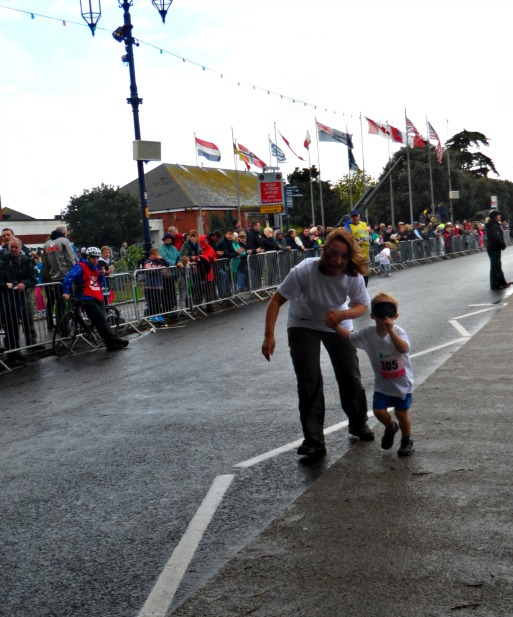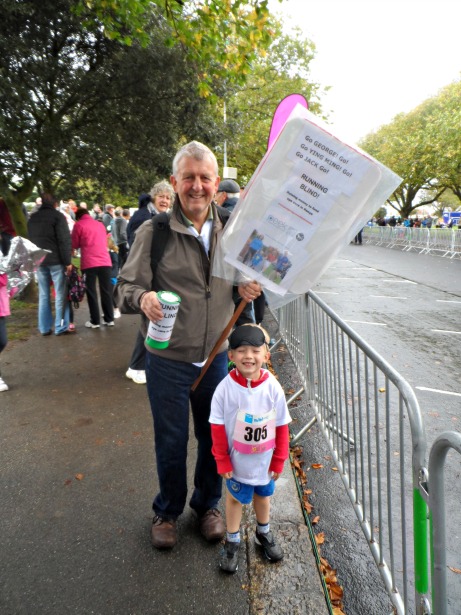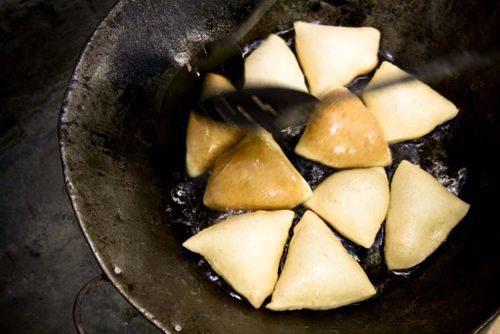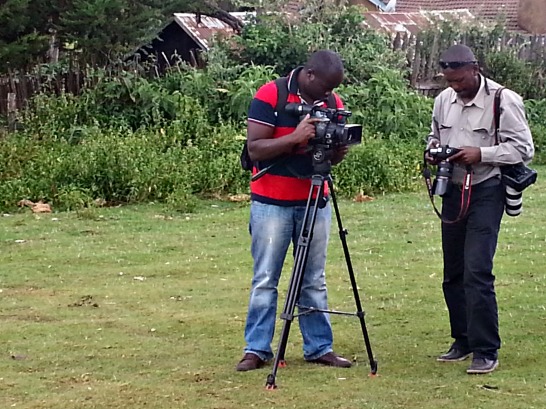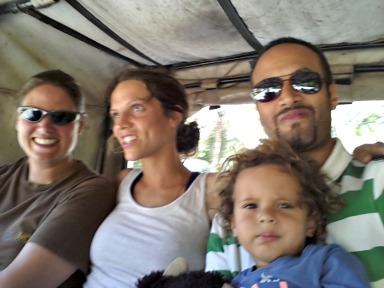Alone, in the corner of the simple, clay home, Mama Wangari stares wide eyed as though doing so will somehow allow her to see. A Kenyan grandmother of three, she has been blind for years and consequently has become increasingly isolated.
Six weeks ago, Joel, a community health care worker examined her using a mobile phone. Today he is back.
Joel has used the specially adapted smartphone, the same one he uses to examine people with, to guide him to Mama Wangari’s home. Much like using Google Maps to navigate around town, it works perfectly well in a remote Kenyan village. Along with neighbouring patients found to be blind, they are brought to the eye clinic in town to be assessed and treated.
Like most patients in the eye clinic she is wearing her best clothes. It is rare for most people attending the clinic to have seen a doctor before. She is clearly struggling to navigate; with assistance we get her sat in position to be examined. As I peer down at the magnified view of her eyes I witness a familiar sight. Her pupils are not clear and black but a cream white. No light can penetrate through them for me to see the back of her eyes. No light penetrates through them for her to see. She is blind.
Her pupils are white due to a change in the natural lens of the eye. The lens sits just behind the coloured iris and is visible through the pupil. It helps focus images on the retina at the back of the eye. Normally it is crystal clear and light effortlessly passes through it being diverted on its path to a clear point of focus. With age the lens commonly starts to mist, initially an off yellow it eventually becomes impenetrable by light. We call this “cataract”.
For you and I, as soon as we start to experience a change in our vision, we have several options: we could see our local optician, family doctor or local eye clinic. What would happen if none of those options existed?
I pull back from the machine through which the finest details of her eyes are visible and feel a mix of sadness and excitement. Sad because she has suffered unnecessarily, but excited knowing something can now be done.
Through incredible advancements in the field of ophthalmology (eye medicine and surgery) it has become not only possible, but also commonplace to be able to remove someone’s cataract and replace it with a tailor made, clear, artificial lens and fully restore their sight. What’s more, it can be done in minutes for just a few pounds. It is wonderful to be part of a speciality where the most frequent causes of blindness can be cured or prevented. Tragically, despite centuries of progress it remains that those most in need are least likely to ever receive it.
80% of all blindness can be prevented or cured
90% of blind people live in low-income countries
A lack of trained human resources, lack of equipment, and poor infrastructure contribute to this tragedy. In the UK we have one ophthalmologist per 20,000 people, in Africa it is on average, one or two per million. Most diagnostic equipment is expensive, large and immobile, so either does not exist in African Eye Hospitals or is not suitable to be moved. Poor roads, no roads and infrequent availability of electricity all add up to those who live beyond the end of the road going silently blind.
In Kenya, we are trialing a new system based on an adapted smartphone. Healthcare workers wearing solar powered rucksacks (no need for mains power or a generator) go door to door in remote locations. They check vision and take pictures of the lens and inside the eye. The data is sent to specialists to diagnose the cause of poor vision, effectively putting the expert in the patient’s home without leaving the hospital. The GPS function of the phone makes it possible to search for people in any given area by any parameter, such as “blind” from “cataract”. The red pins drop on the map showing where they live and their contact details. Transport is arranged from the hospital and treatment is provided.
Her eyes open, wide eyed like the first time she was examined, only this time the light penetrates her clear artificial lens that sits where her cataract once occupied. Her retina is stimulated by uninterrupted views. Her smile is so wide it looks as though she is not only seeing for the first time in years but smiling also for the first time in a very long while. She looks up holding the healthcare workers hand, “take me home quickly” she demands. He asks why the rush? Mama Wangari responds, “I have never seen the faces of my grandchildren”
————————————————————-
Recipe – Kenya Pie
Ingredients
250g strong white flour
250g wholemeal flour
7g dried yeast
10g salt
340g water
Pie filling
Red
2 red peppers
Pinch of cayenne pepper
Salt and pepper to season
Olive oil
Green
See sikumu wiki recipe
Black
Large aubergine, peeled and cubed
Handful of pitted black olives
2 Cloves of garlic
Method
Make the bread dough as in the pie recipe
Red
Roast red ingredients then blend
Green as per recipe
Black
Sauté the aubergine with olive oil and garlic then add to the olives and blend.
For each colour aim to have dry ingredients by roasting sufficiently or dabbing with kitchen town.
Layer the colours in a muffin tin to make small pies then bake at 220°C for 15-20 minutes.
Enjoy in Kenya with some great Kenyan people 😉
————————————————————-
George and Jack fundraising! Heroes!
Thank you boys!






